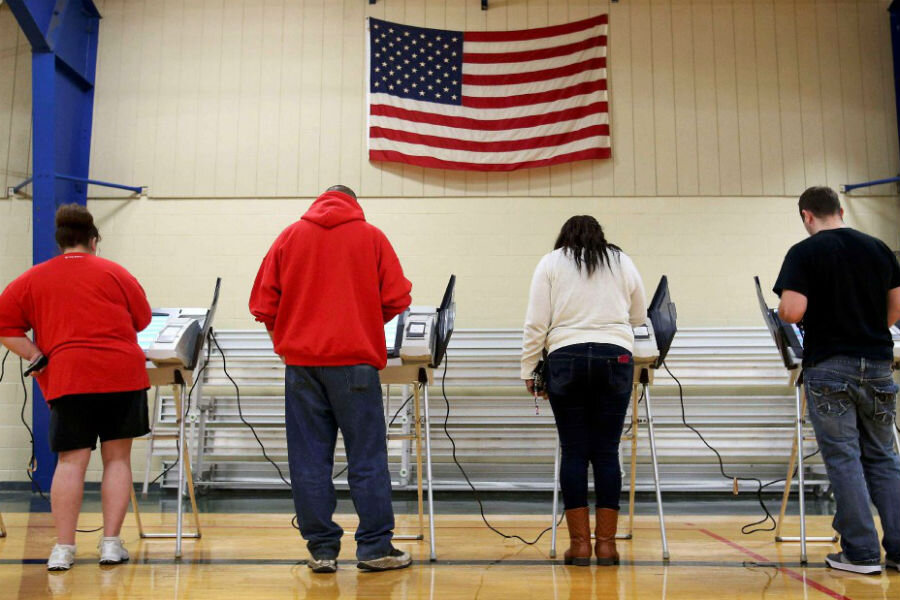How Wisconsin's gerrymandering ruling could affect other states
Loading...
The plaintiffs in a Wisconsin political gerrymandering case won over the court with the help of a new formula.
The US District Court for the Western District of Wisconsin ruled 2-1 on Monday that state Republicans manipulated electoral maps to keep Republicans in power and prevent Democrats from winning seats – the first time a federal court ruled that political gerrymandering kept voters from one party from having a voice in state government, the Los Angeles Times reports. Wisconsin Attorney General Brad Schimel plans to appeal the case to the US Supreme Court, he said in a statement.
The Supreme Court has historically been closely divided on cases of political gerrymandering. The mathematical formula behind this case – the “efficiency gap” – may create the opportunity for a precedent-setting judgment from the highest court that would affect the electoral maps across the country.
“With this decision, partisan gerrymandering should come to an end in Wisconsin and is now on its way to extinction across the nation,” said Gerald Hebert, executive director of the Campaign Legal Center, which backed the plaintiffs, the LA Times reported Tuesday.
In accordance with a 1962 Supreme Court ruling on the principle of “one person, one vote,” electoral districts are redrawn following the census every ten years. In theory, this helps to ensure that an equal number of people live in each district.
However, the process of redistricting is typically conducted by state legislatures, making it prone to partisanship: The party in power typically wants to remain in power and keep the opposing party from winning seats. In many areas, this has led to bizarrely shaped electoral districts. Some are "packed" with voters from that state's minority party, to prevent voters in an area from winning more than one seat. Elsewhere, deliberately "cracked" voting blocs are spread across multiple districts to diffuse their influence and make their party less competitive.
In Wisconsin, the plaintiffs alleged that Republicans – who held both chambers in the state legislature as well as the governorship in 2010 – redrew district boundaries with the help of software programs designed to ensure that Republicans would keep a majority of seats.
The judges noted in their ruling that after the districts were redrawn in 2011, Republicans in 2012 won 60 of 99 seats in the state legislature, despite Democrats winning 51 percent of the statewide vote.
The plaintiffs used a measure called the efficiency gap to show mathematically that the redrawn map minimized the strength of Democratic votes. The formula divides the number of “wasted votes” – either unnecessary votes cast for the winning party or all votes cast for the losing party – by the total number of votes in the election.
The ideal is for both parties to be "wasting" an equal number of votes: a score of 0. The higher a winning party’s score, the fewer votes they need to win a district, which plaintiffs argued violated the principle of “one person, one vote” and the First Amendment right to free speech expressed in casting a ballot.
In Wisconsin, the statisticians reported, Republicans had an efficiency gap of between 11 and 13 percent after the boundaries were redrawn in 2011, The New York Times reports.
The efficiency gap calculates “almost exactly what Justice Kennedy said he was looking for back in the ‘80s, a clear threshold for deciding what is acceptable,” Barry Burden, the director of the Elections Research Center at the University of Wisconsin-Madison, told the Times.
The Supreme Court may now be willing to rule on political gerrymandering, with important effects for ongoing cases in Maryland and North Carolina. A ruling could also affect states with high-efficiency scores, such as Virginia and Michigan.
The district court asked both sides to come up with possible solutions to gerrymandering. One answer, as The Christian Science Monitor’s Patrik Jonsson reported in March, would be to have a nonpartisan commission draw boundaries rather than state legislatures. The approach is being pioneered in California and Arizona.








